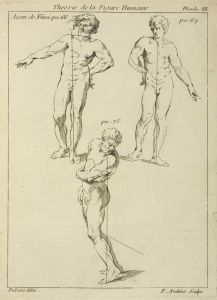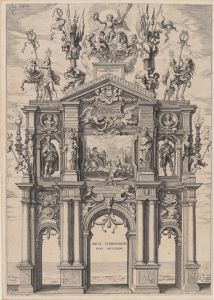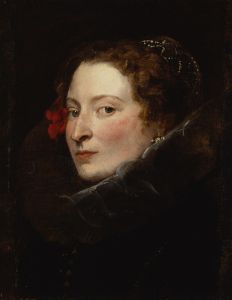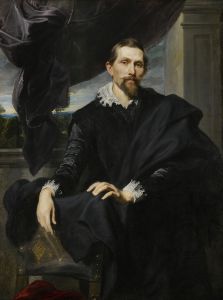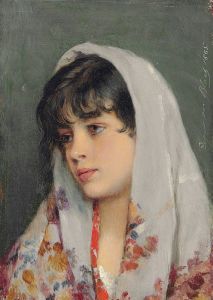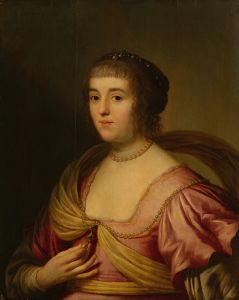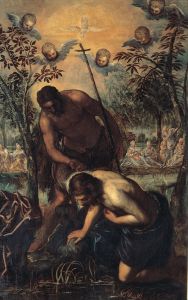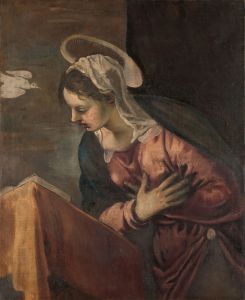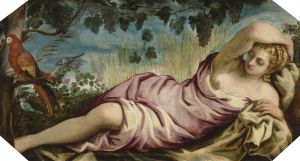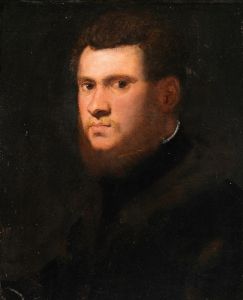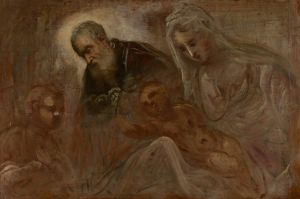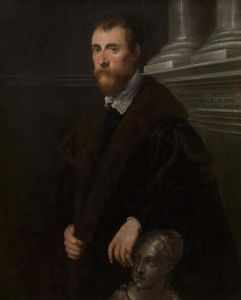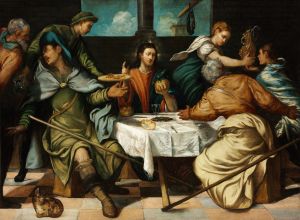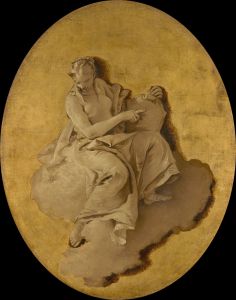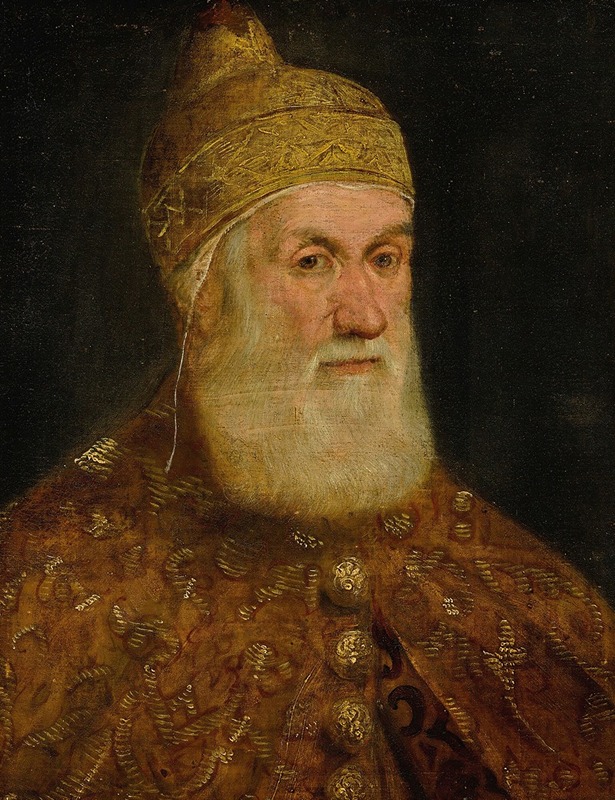
Portrait Of Doge Girolamo Priuli
A hand-painted replica of Jacopo Tintoretto’s masterpiece Portrait Of Doge Girolamo Priuli, meticulously crafted by professional artists to capture the true essence of the original. Each piece is created with museum-quality canvas and rare mineral pigments, carefully painted by experienced artists with delicate brushstrokes and rich, layered colors to perfectly recreate the texture of the original artwork. Unlike machine-printed reproductions, this hand-painted version brings the painting to life, infused with the artist’s emotions and skill in every stroke. Whether for personal collection or home decoration, it instantly elevates the artistic atmosphere of any space.
"Portrait of Doge Girolamo Priuli" is a notable painting by the renowned Italian Renaissance artist Jacopo Tintoretto. This artwork is a significant example of Tintoretto's portraiture, showcasing his skill in capturing the character and status of his subjects. Girolamo Priuli, the subject of the painting, was the 83rd Doge of Venice, serving from 1559 until his death in 1567. His tenure as Doge was marked by significant events, including the ongoing conflicts with the Ottoman Empire and internal political challenges within the Venetian Republic.
Jacopo Tintoretto, born Jacopo Robusti in 1518, was one of the leading painters of the Venetian school and is known for his energetic style and dramatic use of perspective and lighting. His work is characterized by its vigorous brushwork and innovative compositions, which often convey a sense of movement and emotional intensity. Tintoretto's ability to depict his subjects with psychological depth and realism made him a sought-after portraitist among the Venetian elite.
The "Portrait of Doge Girolamo Priuli" exemplifies Tintoretto's mastery in portrait painting. The Doge is depicted in his official regalia, which includes the traditional corno ducale, a distinctive ducal hat, and a richly embroidered robe. The attention to detail in the rendering of the fabrics and textures highlights Tintoretto's technical proficiency. The background of the painting is typically dark and understated, drawing the viewer's focus to the Doge's face and attire. This compositional choice enhances the sense of authority and dignity associated with the Doge's position.
Tintoretto's portrayal of Girolamo Priuli is not merely a representation of his physical appearance but also an exploration of his character and status. The Doge's expression is solemn and contemplative, reflecting the weight of his responsibilities as the leader of the Venetian Republic. The use of light and shadow in the painting adds to the dramatic effect, emphasizing the contours of Priuli's face and the intricate details of his clothing.
The painting is believed to have been commissioned during Priuli's tenure as Doge, a common practice among Venetian leaders who sought to immortalize their legacy through art. Tintoretto's ability to capture the essence of his subjects made him a favored artist for such commissions. The "Portrait of Doge Girolamo Priuli" remains an important work within Tintoretto's oeuvre and a valuable historical document that offers insight into the political and cultural milieu of 16th-century Venice.
Today, the painting is housed in a prominent art collection, where it continues to be studied and admired by art historians and enthusiasts alike. Its preservation allows contemporary audiences to appreciate Tintoretto's artistic achievements and the historical significance of Girolamo Priuli's role as Doge. The "Portrait of Doge Girolamo Priuli" stands as a testament to the enduring legacy of both the artist and his distinguished subject.





